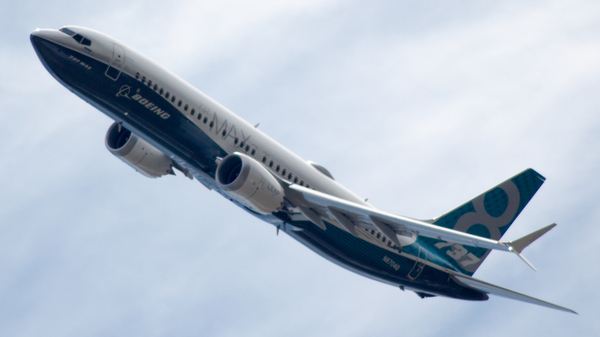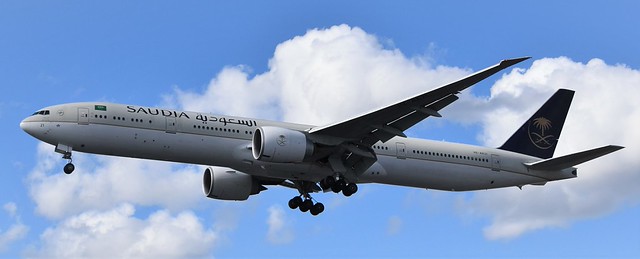Sky Express JS41 at Rhodes on Feb 2nd 2015, gear collapse and runway excursion on landing
Last Update: May 14, 2018 / 16:42:45 GMT/Zulu time
Incident Facts
Date of incident
Feb 2, 2015
Classification
Accident
Airline
Sky Express
Flight number
GQ-100
Departure
Heraklion, Greece
Destination
Rhodes, Greece
Aircraft Registration
SX-DIA
Aircraft Type
BRITISH AEROSPACE Jetstream 41
ICAO Type Designator
JS41
Airport
Diagoras Airport, Rodes Island
Airport ICAO Code
LGRP
AIP Greece states for LGRP in section 2.22.1.3:
Pilots landing or taking off at RODOS/ DIAGORAS Airport should exercise extreme caution when South or South-East (S-SE) winds of more than 15 Kts prevail, as moderate or severe turbulence and wind shear may be encountered on the final approach and/or initial climb out areas (mainly of RWY 07). More specifically the following phenomena affecting seriously the flight safety are observed:
– The wind direction and speed at a given time vary along the runway (horizontal wind shear).
– The wind direction and speed, at a given point of the runway, are continuously changing (turbulent wind shear).
– Severe turbulence on the final approach, take-off and initial climb out areas.
– When the South or South-East wind speed increases over 15 Kts, landing and/or take-off not recommended, since a severe horizontal and turbulent wind shear may prevail at some intermediate point on final approach and/or take-off and initial climb out areas.
– Because unexpected changes in wind direction and speed can be hazardous to aircraft operations at low altitude on approach to and departing from RODOS/ DIAGORAS Airport, pilots are urged to volunteer reports of wind shear to DIAGORAS TWR or RODOS APP, as soon as possible, so that the pilots of following aircraft can be warned. It is suggested that pilots experiencing a wind shear in flight should report it in the following format:
a) A simple warning of the presence of wind shear, even if no further information can be given.
b) The altitude or altitude band, where the wind shear was encountered.
c) Details of the effects of the wind shear on the aircraft, i.e. airspeed gain or loss, vertical speed tendency, etc."
On May 14th 2018 Greece's AAIASB released their final report concluding the probable causes of the accident were:
The decision to perform a landing following a non-stabilized approach.
Landing with a strong and variable wind, the speed and the crosswind component of which were in excess of the values specified by the standard operating procedures, the aircraft man-ufacturer and the recommendations for the said aerodrome in AIP GREECE.
The failure to adhere to CRM principles.
The AAIASB reported: "At 07:23:54 hrs., approximately 12 min prior to landing, in the first contact of the flight crew with the Control Tower of the Airport of Rhodes, the flight crew was briefed by the Air Traffic Controller (ATC) with respect to the weather conditions at the area of the airport, variable winds prevailing with a direction from 20ï to 160ï, average wind direction from 110ï, wind velocity 20 kt gusting 38 kt." Tower at the same time alerted emergency services, in accordance with aerodrome procedures, to take their stand by positions and reminded the flight crew again, that "as a result of the strong wind shear and turbulence, landing at the airport is not recommended under the circumstances."
ATC again informed the flight crew: "At 07:32:36 hrs., at about 8nm to the airport, the ATC contacting again the flight crew in-formed that wind in the last ten minutes is shifting in all directions, with mean wind velocity 16 kt and wind gust 37 kt; ATC also reminded that under these conditions landing is not recommended.", the AAIASB annotated that the communication between tower and aircraft was smooth with the crew acknowledging receiving the information.
The flight crew opted for a landing with the flaps at 9 degrees and a Vapp of 129 KIAS. The checklists were worked, all gear indicated down and locked. The aircraft touched down with the right main gear first at an airspeed of 170 KIAS and a vertical acceleration of +1.8G, the FDR did not show any evidence the left main gear touched the runway. The left main gear collapsed about 1-2 seconds after first touchdown according to FDR.
The AIAASB wrote:
During deceleration immediately after touchdown, with the flight crew having performed all checks specified in the a/c manual and after ATC directed the aircraft to vacate the runway via taxiway ‘C’, the aircraft veered to the left and came to rest at the left edge of the runway without exiting the runway, with an eastward direction.
With the fire service vehicle approaching the aircraft, the flight crew contacted the Control Tower of the airport stating that everything is ok, and then reporting inability to taxi when asked whether the aircraft is able to taxi; when asked whether a tire was burst, the flight crew confirmed that this is the case.
At 07:37:49 hrs. the Fire Service advises the Control Tower of the airport that the fire truck sprays foam due to fuel leakage.
At 07:41:08 hrs. the Control Tower, when so asked by the ‘follow me’ vehicle, inquired of the flight crew whether passengers could be disembarked and the answer was that getting off from the passenger door (forward left) would not be feasible given the presence of the fire-fighting foam on the runway, and that the rear right door (Emergency Exit) would be used instead.
As reported by the Air Traffic Controller passengers were disembarked 15 minutes after the incident, and the process lasted approximately 10 minutes.
Upon a first visual inspection at the accident site and before the left wing of the aircraft was raised on jacks, it appeared that the left main landing gear folded back resulting in the air-craft’s left side dragging the runway (the left main landing gear and its housing into contact with the runway) and stopping at the left edge of the runway facing to the east.
The AAIASB complained that although a working CVR was on board, it's recordings had been overwritten as the device continued to operate not having been disabled despite the accident and the flight crew leaving the cockpit.
The AAIASB analysed:
The flight crew decided to make a Flap 9ï configured landing at a speed of 129 knots having regard to the prevailing winds, rather than the procedure envisaged in the aircraft’s flight manual and the corporate procedures specifying Flap 25ï or 15ï.
During the approach and with the aircraft being approx. 20 sec to Touchdown, the speed of the aircraft reached 188 kt indicating that this was a non-stabilized approach, under the Op-erations Manual, para. 8.9.11 of Part A and para. 2.12.2 of Part B thereof.
Furthermore, speed at Touchdown was approx. 170 kt, more than 50 kt higher than in the envisaged configurations (with 15ï or 25ï Flaps) and vertical acceleration 1.8g (the limit for a heavy landing is 1.5g), with horizontal and lateral acceleration as well.
The high speed at Touchdown resulted in the high drag on the wheels due to the prolonged acceleration of the wheels to reach the speed of the aircraft. The fact that the wheels did not blast shows that the loads exercised were not excessive.
The First Officer failed to point out to the Captain that they were not performing a stabilized approach, that the speed was in excess of the calculated speed for the approach and failed to urge the Captain to perform a go-around.
The AAIASB analysed the fracture and fold back of the left landing gear:
The analysis conducted at the laboratory of QinetiQ, Cody technology Park, where the left main landing gear was dispatched for examination, established that the fracture of the Drag Brace trunnion pin is due to overload.
After the inboard pin failed, the load was taken on by the outboard pin of the drag brace, resulting in the breaking of Rib 8 directly above and forward of the housing of the outboard pin of the drag brace. After the fracture, the rear segment of Rib 8, containing the outboard pin, moved inwards which resulted in the outboard pin being pulled out of its housing and thus, without the Drag Brace’s action the Shock Strut folded rearward.
As the Shock Strut folded rearward, it pushed Rib 7 upwards resulting in the Rib’s breaking in overload.
Metars:
LGRP 020820Z VRB16G36KT 9999 FEW010 SCT018 17/13 Q1006 WS ALL RWY NOSIG
LGRP 020750Z VRB17G44KT 9999 FEW010 SCT018 17/13 Q1006 WS ALL RWY NOSIG
LGRP 020720Z VRB13G33KT 9999 FEW010 SCT018 17/13 Q1006 WS ALL RWY NOSIG
LGRP 020650Z VRB10G34KT 9999 FEW010 SCT018 17/13 Q1007 WS ALL RWY NOSIG
LGRP 020620Z 12015G34KT 060V220 9999 FEW010 SCT018 17/13 Q1007 WS ALL RWY NOSIG
LGRP 020550Z VRB17G47KT 9999 FEW010 SCT018 17/13 Q1007 WS ALL RWY NOSIG
LGRP 020520Z 12016G34KT 060V180 9999 FEW010 SCT018 17/13 Q1007 WS R07 WS R25 NOSIG
LGRP 020450Z 13014G34KT 060V190 9999 FEW010 SCT018 17/13 Q1007 WS R07 WS R25 NOSIG
LGRP 020420Z 13017G36KT 040V210 9999 FEW010 SCT018 17/13 Q1007 WS R07 WS R25 NOSIG
LGRP 020350Z 13017G36KT 040V210 9999 FEW010 SCT018 17/13 Q1007 WS R07 WS R25 NOSIG
LGRP 020320Z 13017G35KT 060V180 9999 FEW010 SCT018 17/13 Q1008 WS R07 WS R25 NOSIG
LGRP 020250Z 13017G33KT 9999 FEW010 SCT018 17/13 Q1008 WS R07 WS R25 NOSIG
Incident Facts
Date of incident
Feb 2, 2015
Classification
Accident
Airline
Sky Express
Flight number
GQ-100
Departure
Heraklion, Greece
Destination
Rhodes, Greece
Aircraft Registration
SX-DIA
Aircraft Type
BRITISH AEROSPACE Jetstream 41
ICAO Type Designator
JS41
Airport
Diagoras Airport, Rodes Island
Airport ICAO Code
LGRP
This article is published under license from Avherald.com. © of text by Avherald.com.
Article source
You can read 2 more free articles without a subscription.
Subscribe now and continue reading without any limits!
Read unlimited articles and receive our daily update briefing. Gain better insights into what is happening in commercial aviation safety.
Send tip
Support AeroInside by sending a small tip amount.
Related articles
Sky Express AT72 at Athens on Dec 22nd 2019, de-ice failure
A Sky Express Avions de Transport Regional ATR-72-212A, registration SX-SEV performing flight GQ-260 from Athens to Kefallinia (Greece), was climbing…
Sky Express AT42 at Naxos on Jul 12th 2019, runway excursion on backtrack for departure
A Sky Express Avions de Transport Regional ATR-42-500, registration SX-FOR performing flight GQ-405 from Naxos to Athens (Greece) with 46 passengers…
Sky Express AT42 near Karpathos on Jun 21st 2019, engine problem
A Sky Express Avions de Transport Regional ATR-42-500, registration SX-TWO performing flight GQ-100 from Heraklion to Rhodes (Greece) with 46 people…
Newest articles
Tway B38M enroute on Jan 10th 2026, power bank thermal runaway, 8 injuries
A Tway Air Boeing 737-8 MAX, registration HL8579 performing flight TW-634 from Sanya (China) to Cheongju (South Korea) with 32 passengers and 6 crew,…
Saudia B773 at Islamabad on Oct 14th 2024, landed on wrong runway
A Saudi Arabian Airlines Boeing 777-300, registration HZ-AK21 performing flight SV-724 from Riyadh (Saudi Arabia) to Islamabad (Pakistan) with 399…
Subscribe today
Are you researching aviation incidents? Get access to AeroInside Insights, unlimited read access and receive the daily newsletter.
Pick your plan and subscribePartner

ELITE Simulation Solutions is a leading global provider of Flight Simulation Training Devices, IFR training software as well as flight controls and related services. Find out more.
SafetyScan Pro provides streamlined access to thousands of aviation accident reports. Tailored for your safety management efforts. Book your demo today
AeroInside Blog
Popular aircraft
Airbus A320Boeing 737-800
Boeing 737-800 MAX
Popular airlines
American AirlinesUnited
Delta
Air Canada
Lufthansa
British Airways



